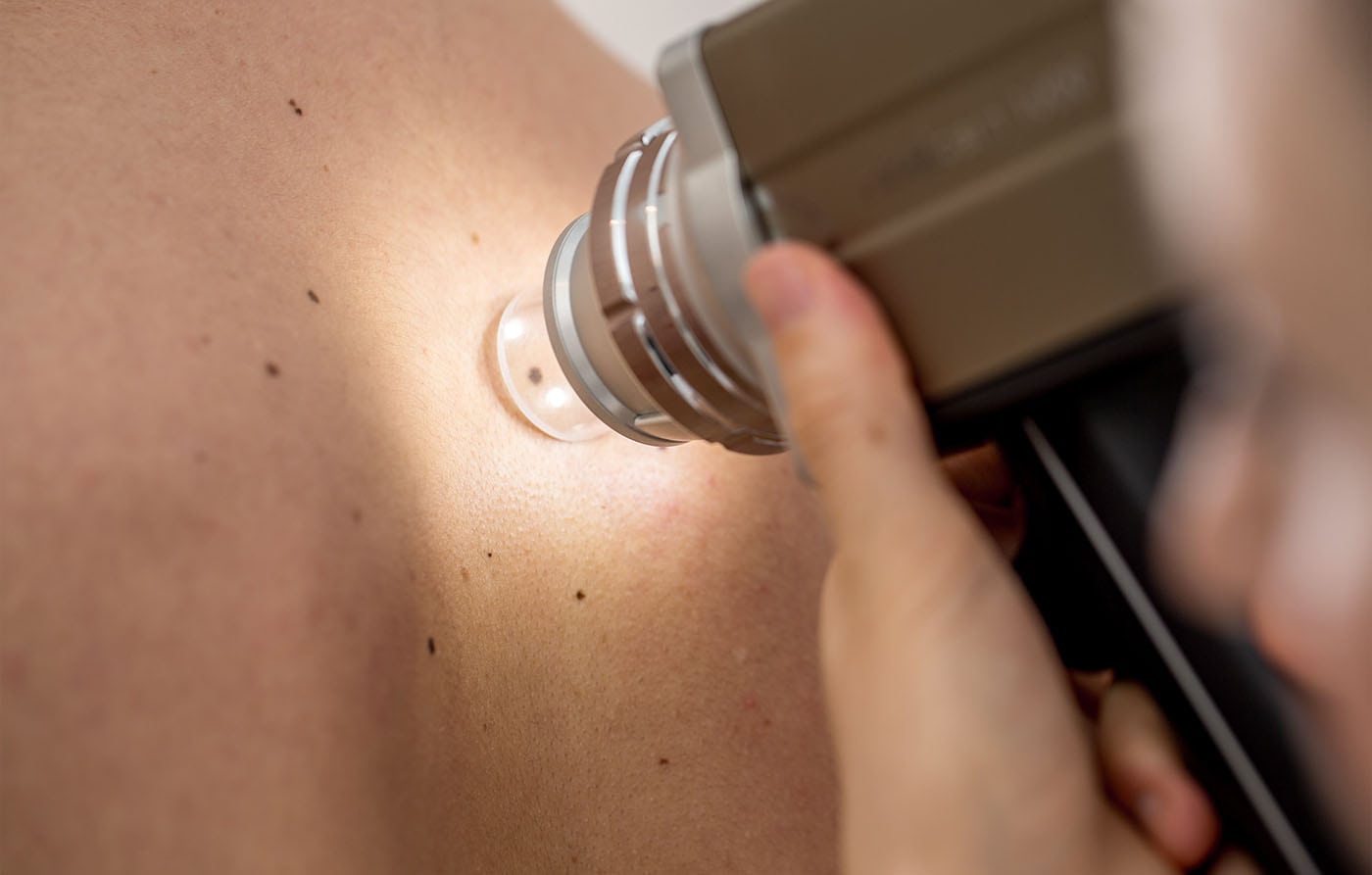
A “mole check” is one of the most common reasons to visit a dermatologist. Dermatologists are trained to examine and diagnose moles which look suspicious for cancer.
A “mole check” is one of the most common reasons to visit a dermatologist. Dermatologists are trained to examine and diagnose moles which look suspicious for cancer.
Moles are made up of the pigment cells (melanocytes) which produce the dark pigment (melanin) that gives the skin its colour. Melanocytes clustered together form a mole (also known as naevus). Moles vary in colour in different skin tones, and can be found anywhere on the skin, including on the hands and feet, genitals, nails and scalp. It can even appear in the eye.
Moles appear as flat or slightly raised light to dark brown or black lesions. Slight pigment variation and increased hairs may be seen. With time, they can become thicker.
Some moles are present at birth or appear within the first two years of life and are known as congenital melanocytic naevi. Most develop during childhood and early adult life are called acquired melanocytic naevi. The number of moles increases up to the age of 30-40.
New moles appearing in adulthood need to be monitored and checked if growing or changing.
There is a slightly increased risk of cancerous change (malignant melanoma) in all moles, in particular large moles of>20cm in diameter. Most of the time though, moles remain benign.
Dysplastic naevus, may look like a melanoma. When examined closely under the microscope, it contains abnormal cells and there is a potential for these abnormal cells to transform into melanoma. While moles can change in size and shape during puberty and pregnancy, any changes to moles should be looked at by your dermatologist.
If a mole is deemed to have changed and has suspicious features, your dermatologist may recommend for it to be removed for histological analysis to rule out malignant change. The surgical method will depend on the mole’s size and site, and potential cosmetic outcomes.

Gleneagles Medical Centre
6 Napier Road, #06-01
Singapore 258499
Clinic Hours:
Monday, Tuesday, Thursday & Friday
8am to 1pm
2pm to 5pm
Wednesday and Saturday
8am to 12pm
Contact Information
T: +65 6254 6646
F: +65 6259 9853